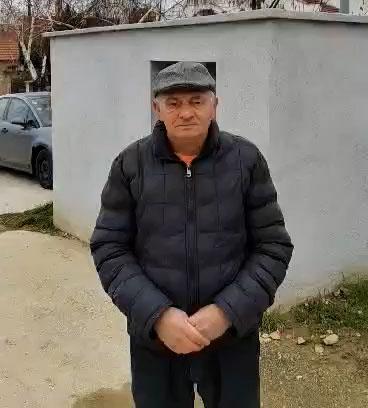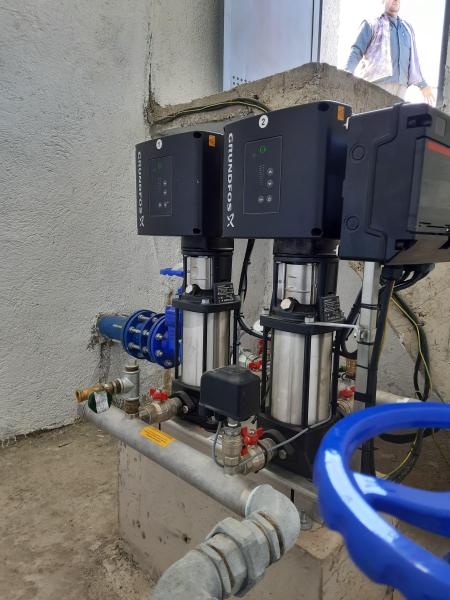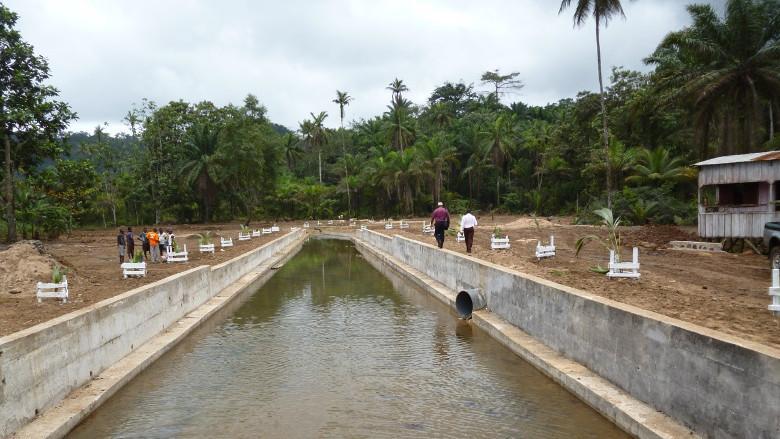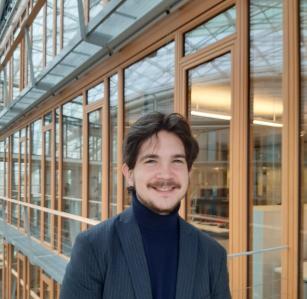North Macedonia and São Tomé projects bring clean drinking water to hundreds of thousands of people
Božin Spasov has lived in the village of Leski in the eastern part of North Macedonia for nearly seven decades. As a primary school teacher, one lesson he always taught was to be careful drinking the local water and to understand that it would not always be available.

Božin Spasov
“We live in such a hot climate that we do not have stable water supply,” Spasov says. “Especially during the summer, we were without drinking water almost every day.”
Old and poorly installed water supply pipes caused water shortages and hurt the quality of drinking water in the village throughout the year. The water was often contaminated with organic substances, making it dangerous to drink.
To provide good water to Leski, the local government decided to connect to the water supply system of Vinica, a bigger town nearby, with a 3.5-kilometre pipeline. At the same time, a modern filter station to purify drinking water and a pumping station were installed in Vinica. In February 2023, the European Investment Bank approved a €50 million loan to North Macedonia to support the project and improve many other water problems in the country.
“Now we have water in summer and in winter,” says Spasov. “There is no one in Leski who is not satisfied.”
- Read more about innovative water climate solutions to deal with scarcity and flooding in the coming decades
A water crisis
North Macedonia is just one example among dozens of massive water investments by the European Investment Bank. Water is an increasing problem around the world, from scarcity of drinking supplies and droughts that hurt farming to flooding and violent storms that destroy homes and roads. The European Investment Bank is one of the largest water lenders in the world, with close to €79 billion invested in over 1 600 projects during the last 60 years.
The United Nations General Assembly declared in 2010 that safe and clean drinking water and sanitation are essential human rights. But about two billion people worldwide have bad drinking water today. Nearly half of the world’s population lacked regular supplies of water in 2022. Population growth and a rapidly developing global economy, combined with climate change, will make this problem much worse over the next few decades.
Access to safe and affordable drinking water and modern sanitation has huge benefits for societies and economies. Countries in areas such as sub-Saharan Africa have a hard time improving water supplies, because they also face other pressing issues, such as poverty, conflict, or migration. The UN Department of Economic and Social Affairs reports a huge gap in funding for water and sanitation projects.
“Investments in water management are key for development,” says Juan Bofill, a senior EIB water engineer. “We are trying to cover the financing gap and market failures of the sector by supporting adaptation and mitigation projects across the world. Partnering with local actors and other institutions is crucial to maximise the impact.”
- Read more about how we need to focus on the long-term benefits of investment in this natural resource, rather than quick fixes for the water crisis
Better supply of drinking water for North Macedonia
In North Macedonia, the loan will help other cities and towns that have similar water problems to Leski. Called a “framework loan,” it can finance a range of projects.
“Each municipality has different problems and water infrastructure, there is no one-size fits all solution,” says Alessandro de Concini, a senior staff member in the lending team at the European Investment Bank. “Framework loans offer flexibility, making it possible for us to finance relatively small projects all across the country.”

Through the construction of the second phase of the filter station, the capacity of the station was doubled. This way the citizens of Vinica town and Leski village can enjoy drinking water for longer period
Backed by a guarantee from a European Union programme called the European Fund for Sustainable Development, this framework loan will support the construction and renovation of water supply, wastewater, and flood protection infrastructure in 80 cities or towns across North Macedonia. The European Investment Bank also gave a €1.2 million grant for technical assistance.
“Improved coverage, quality and efficiency of the water sector is estimated to bring benefits to some 700,000 people and to increase resilience to climate change for 40% of country’s population”, says Lijana Jancauskiene, a senior water engineer in the Water Security and Resilience Division at the European investment Bank.
Helping families have a better life in São Tomé
Located close to the equator, São Tomé has plenty of rainfall and water supplies. But only a small part of the population has easy access to safe drinking water. The poor water supply and lack of adequate water treatment affects the quality of life and the economy for a part of the world that also suffers from extreme poverty.
To improve the water, a local utility company, Empresa de Água e Eletricidade, developed a 20-year plan to improve and expand supplies in the São Tomé region. This will mean better distribution of water, larger water reservoirs and water treatment plants, and improved access to safe water.
The European Investment Bank supported the plan with an €8.44 million loan signed in December 2022. The deal includes a €5.56 million grant for technical advice. This project is part of the EU Global Gateway programme, which aims to mobilise €300 billion in global investments from 2021 to 2027. Global Gateway will particularly help emerging countries in areas such as new electricity connections, new ports and railways, more modern telecommunications, infrastructure and digitalisation.

According to the OPEC Fund for International Development, only 16% of São Tomé’s populations has access to potable water
More than 25,000 people will get better access to water when the São Tomé project is finished. Households will be connected to water pipes and women and girls no longer will have to make long treks to get safe water. Cleaner water and water treatment will also reduce the spread of malaria, cholera and typhoid. Better water distribution will also improve the island resilience toward climate change.
“São Tomé is not poor when it comes to water,” says Emmanuel Chaponniere, the senior European Investment Banks water sector engineer, who worked on this project. “There is sufficient rainwater throughout the year to feed the springs and rivers. But, with climate change, rains are now more intense and in between, you have longer drought periods. So, if you do not have proper water storage and transport infrastructure you can find yourself in a worrying situation.”
